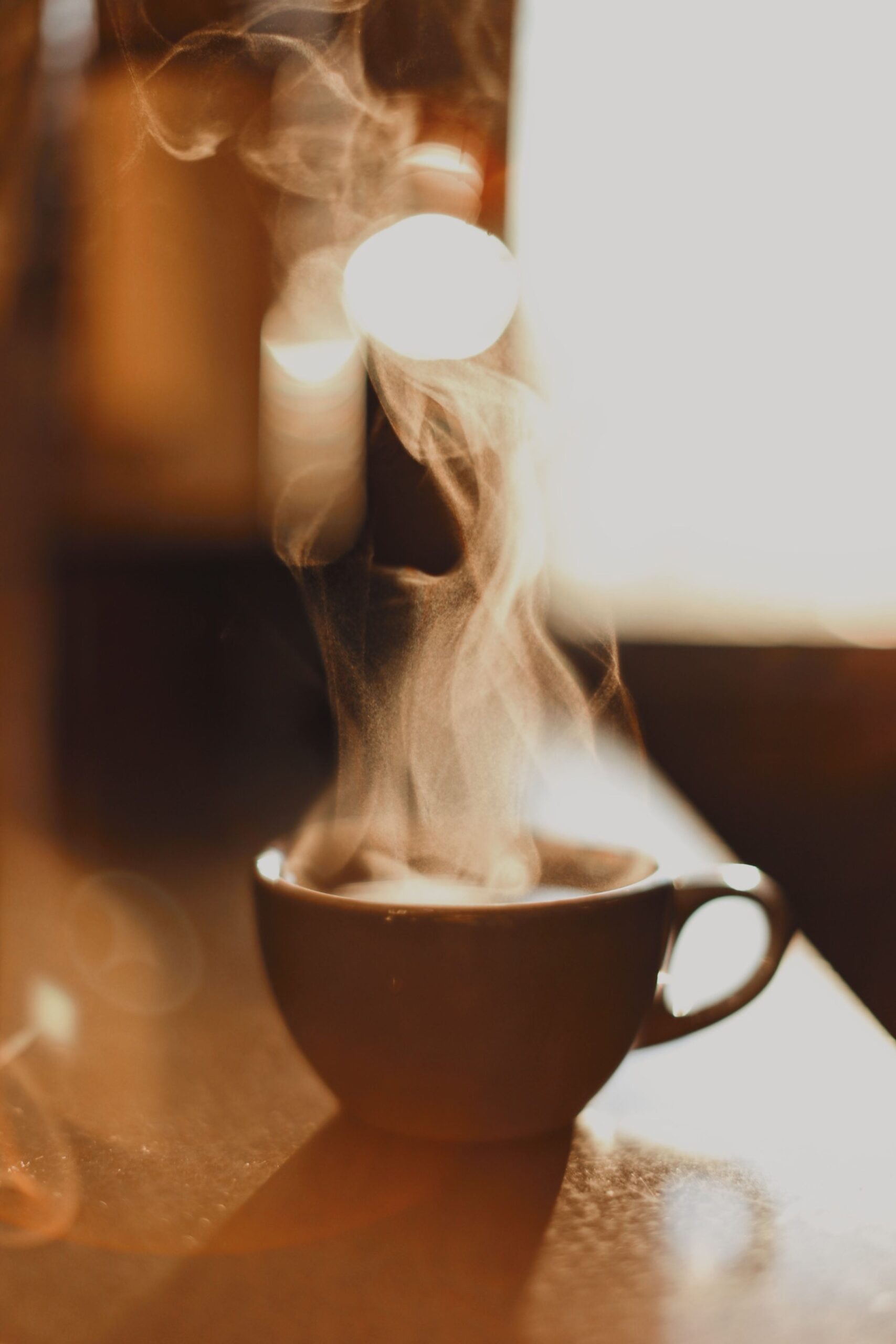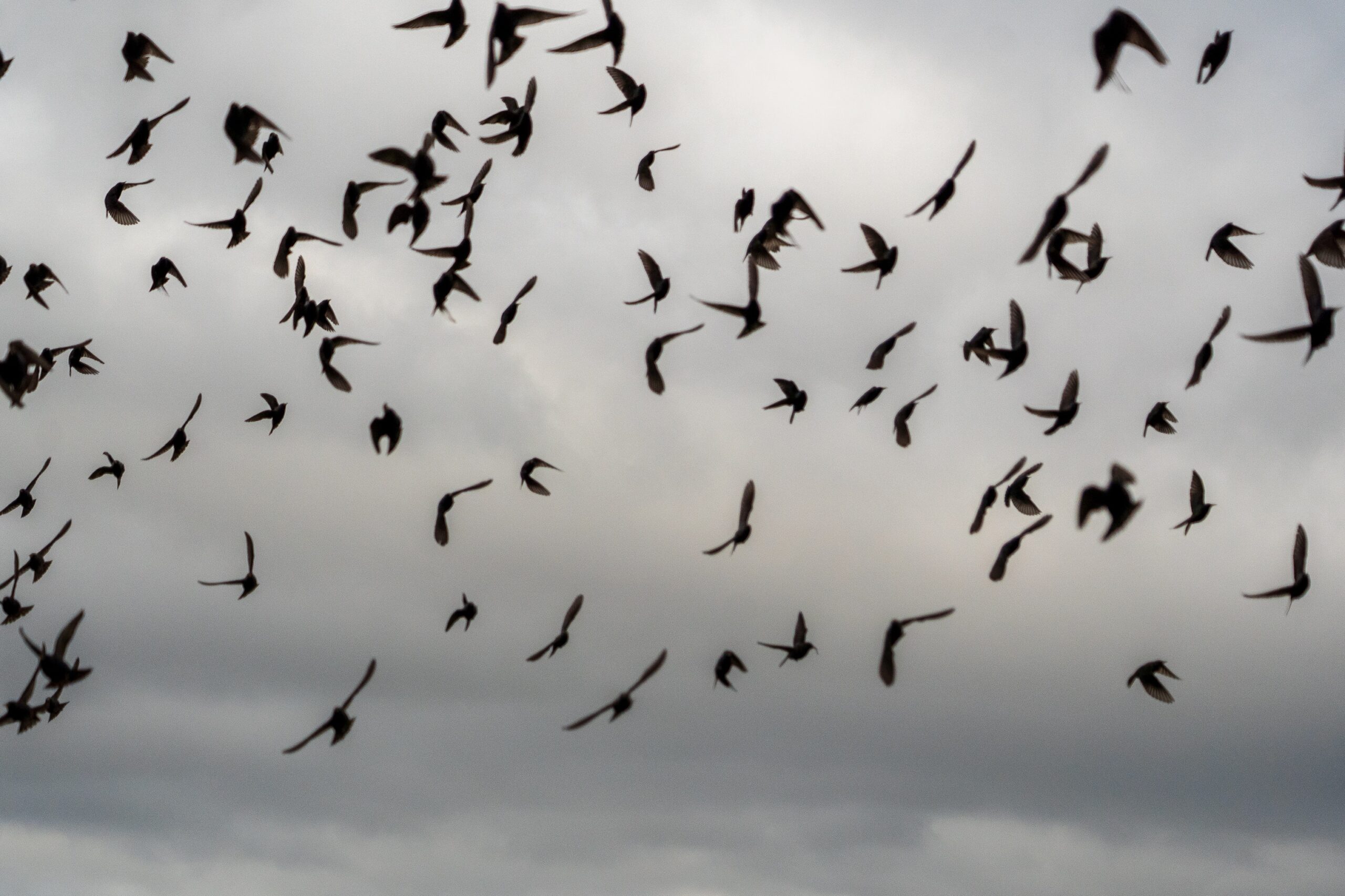Star Wars was never “just for boys.” I say this in response to backlash from outspoken fans over The Last Jedi this winter. Not all the fans, mind you, but a minority of unhappy men who have been trolling female writers and actors of the film, and spewing fury over the franchise being “tainted” by liberal feminism. They believe Star Wars has been stolen, hijacked, and destroyed, the “sacred story telling” hacked up and repackaged. This couldn’t be farther from the truth. And I cannot stay silent.

As a woman who was once a little girl, who played with Star Wars tree ornaments (because they looked more like the characters than the action figures) and made up my own Star Wars stories, I find allegations of the “taint” of “sacred story telling” to be ludicrous and insulting. First of all, there is nothing sacred in a film series; it is simply evolving and expanding for a new audience. Secondly, in 1997 (the year of the great twentieth anniversary re-release) I was not the only elementary school girl playing with the Millennium Falcon or pretending to be an Ewok. I dressed up as Luke Skywalker for Halloween. When kids across the room started talking Star Wars, my little ears would prick up, and I’d suddenly be there hanging onto their every word. It was love. It had nothing to do with my gender. (To see an older post about my “Life In Star Wars”, please click this link.)
The only time I heard Star Wars labeled as a “boy thing” was from the mouth of an eight-year-old I once babysat. Trying to relate to her, I told her what my favorite movie was. There was a pause and she said, dismissively, “I don’t like boy things.” I thought, well, you’re eight, and you don’t know what you’re missing. She scampered off to play with her Barbies.
Leia Organa
Star Wars had a profound impact on my concept of story-telling, adventure and the love of characters. It was my safe haven during the turmoil of bullies and growing pains in middle and high school. It was also one of the places in which I saw women – although at first there were not many – as important and vital characters in a story. Star Wars is by no means a feminist show piece, but it is to George Lucas’ credit that the sole female of the original films had depth, integrity and nerve.
Princess Leia is the first of the main characters to appear. The story is about the completion of her mission to get the plans for the Death Star into the Rebels’ hands, interwoven with Luke’s personal story of tragedy and exploring his new and profound talents. She starts the chain of events, and the boys are swept up in her wake.
Leia does not take her imprisonment and her upcoming execution sitting down. She faces it with her chin held high. And when Luke sets her free, she bursts into action, grabs a blaster and starts shooting. Finding herself trapped in a cellblock with two men and a Wookiee with no idea how to get out, she blasts a hole and opens up the garbage chute. In they go. Simple. Han Solo bellows at her, she snaps right back.

When they escape the chute (which almost crushes them to death) Han says “If we can avoid any more female advice, we might be able to get out of here.” Leia says what a sharp-witted senator and Rebel leader says: “I don’t know who you are or where you came from. But from now on, you do as I tell you.” Who leads the pack out of the corridor? Leia. Han grumbles about following orders from no one but himself. Leia says, “It’s a wonder you’re still alive.”
What did this teach me? It taught me that women didn’t have to play second fiddle to the men in any given story. Sure, Luke crushes on her but it is not the sole feature of their friendship (pre-discovery of their actual relationship as siblings). She was not inserted into the film as an obvious love interest. Carrie Fisher played her as a woman with agency and dignity, not a sweet but mindless tag-along. Leia was a fully-realized human being who (gasp) may have had better ideas than Han and Luke at any given point. Leia suffered no fools.

In The Empire Strikes Back, Leia is a leader in a uniform, again suffering no fools, particularly Han with whom her relationship has only grown more complicated. They bicker. They banter. She is prickly. She does not want to be swept off her feet. She is not tempted by innuendo. But she is drawn to his raw honesty. When Lando Calrissian betrays them to Vader, and Han is frozen in carbonite and handed over to Boba Fett, she endures it with quiet dignity. And when the first opportunity arises, she gets that blaster back in her hands and starts shooting. When Fett gets away with his quarry, she takes command of the Falcon and goes to rescue Luke.
Return of the Jedi almost breaks my argument. Almost. It’s that infernal iron bikini. It made this fiery suffer-no-fools woman into a sex slave for Jabba the Hutt. It made me uncomfortable as a young girl, and I hate it now. Carrie Fisher didn’t like it either. Amazingly, the bikini is no match for Leia’s intregrity. She falls into that situation because she came to rescue Han. She has to spend the rest of the battle – from Luke’s confronting Jabba to his fight with the Rancor to the moment when Jabba tries to fling Luke and Han to the Sarlaac – in the stupid slave outfit. That does not limit her. What is her first order of business when the battle starts? Strangle the giant slug she’s chained to. She spends the rest of the film on Endor, forging an alliance with the Ewoks, and, yes, taking part in an important battle.
When we see her now in The Force Awakens and in The Last Jedi, she is doing just that: fighting, calculating, leading. The major difference is that she is not the only woman doing these things. It is Star Wars at its best because its characters – and all of its characters – are at their best. I’ll get back to The Last Jedi a little later. But first, I’d be remiss in not mentioning the Expanded Universe.
Mara Jade
While Leia was the only woman on the ground, flying a ship or shooting a blaster in the films, she was not alone in the novels. That was impactful to me. The Expanded Universe is now considered to be in the “Legends” category, but when I was growing up and devouring these books, they were considered canon. This gigantic series built the timeline of events post-Return of the Jedi: Luke’s mission to rebuild the Jedi, Leia’s dedication to the New Republic, slews of new characters, crises, Imperial warlords making comebacks. Leia fought her own battles. She married Han and had three children and still managed to rise to Head of State. She was not the only woman to show initiative, verve and agency. The second Star Wars woman to have an impact on me – especially now – is Mara Jade.
One of the (few) sad things about The Force Awakens and The Last Jedi becoming “canon” is that Mara Jade is more or less erased from the narrative. And it’s a shame. Mara Jade, created by Timothy Zahn for Heir to the Empire and its sequels, had her own unique and painful story to contribute. She was the Emperor’s personal assassin, trained in the Force, and tasked to kill Luke Skywalker. Five years after Return of the Jedi, her path crosses Luke’s, and she is torn between fulfilling that final command, and the chance to make her own path as a Jedi. She becomes a reluctant ally of the New Republic and Luke’s growing Jedi order. Prickly and red-headed, stubborn and cunning, Mara forges her own path and, in her own way, also suffers no fools.
Mara is also clearly a broken person. Her reluctance to trust others gets her into trouble, makes her a loner, unreliable. She is not the first of Luke’s students. In fact, it takes her years to find commonality with them and to accept instruction. I emphasize this because Mara had her own presence in the novels that was not limited to a one-dimensional category. She was not created to be a sidekick or a love interest for Luke, but rather a living, breathing, agonized human being all her own. The fact that she does fall in love with him and does marry him is not solely for Luke’s benefit. She is not an object but one half of the equation, Luke’s equal.
Mara wasn’t my favorite character in the Expanded Universe, but she has grown on me in the twenty years since I first “met” her. Not as Luke’s wife, but as a fiery cinder of a woman who told me that a lightsaber belonged in my hands, too. Her path to the Jedi was not conventional but redemptive. The triumph of her character was that she overcame the burdens of her explosive past and the grip of the dark side to embrace the light and love what she found there. If that’s not strength, I don’t know what is.
There is one Star Wars woman I have not mentioned, Padme Amidala, Luke and Leia’s mother. I ignore the prequels as a general rule. Padme herself is a wise woman and a strong leader, but she diminishes as Anakin falls to the dark side. Her losing “the will to live” after giving birth was ridiculous and unsatisfying. Revenge of the Sith had Padme succumb to her husband’s mistakes, not finding her own path away from and in spite of it. She deserved to be more than a plot device.
Star Trek: Voyager
Remember that I was introduced to Star Wars in the ’90s. My early education in science-fiction also included the various Star Trek spin-offs. In 1997, I was watching Star Trek: Voyager religiously. As I became more and more immersed in the Star Wars universe, I was swept up in the saga of a ship returning home, a ship captained by a strong woman. Captain Janeway marked a historical moment in a franchise whose female crew members wore mini-skirts as uniforms (the sole reason why I can’t stand watching classic Trek). At the very same time I was introduced to Leia, I was also getting to know Janeway: tough, standing her ground, determined to get her crew home against impossible odds.
She might just be the best captain out of the whole bunch. Voyager‘s over-arching story has more focus: the crew getting home across a vast distance, which forced the characters to develop more meaningful relationships and face long-term challenges. The characters here are better developed (with exceptions in Harry Kim and Kes) than in previous series; they butt heads, they despair, they find comradery. The captain isn’t separate from her crew, but rolls up her sleeves and works alongside them, a scientist (nerd), comrade and leader. She holds her ground in shaky situations, and sticks to her guns even when (and especially when) the first officer disagrees. If she makes mistakes, she owns them. She, like Princess Leia, suffered no fools and pulled no punches.

Every week I’d watch this woman confidently and unwaveringly lead a crew of colorful personalities into the unknown. But it wasn’t just about leading her crew. She advocated for them and got to know them. Voyager is a showcase in people, especially women, working together. Captain Janeway, B’Ellanna Torres, the chief engineer, and Seven of Nine, the recovering Borg jane-of-all trades, were all brilliant, innovative and unique women, and the best(and most complicated) characters of the series. Never is Janeway’s compassion more clear than when she takes Seven of Nine from the Borg collective. Seven’s journey to reclaim her humanity takes years, and Janeway’s patience and steadfastness sees her through it. Seven blossoms and thrives.

While Leia was the lone woman among the men, Voyager was a showcase of women working together. Thriving together. It had what Star Wars, what Leia, was missing. Until now.
The Last Jedi
Twenty years after Star Wars came into my life and began to shape my little creative brain, The Last Jedi was released into theaters, the continuation and sequel to The Force Awakens. Leia is ever the fearless leader, but she is not the only woman calling the shots or moving the plot. This was refreshing in The Force Awakens, and even more so in The Last Jedi, because all along – for twenty years, now – I believed strong women were a vital component to this rich saga. And now we can actually see them.
They are everywhere – in the Resistance and the First Order alike. The first battle sequence of the film shows the heroic sacrifice of a female bomber pilot. Captain Phasma returns as the scariest, deadliest stormtrooper. Leia’s second in command is Vice Admiral Holdo, who doesn’t “look” like a military leader with her classy gown and violet hair, but, damn, she knows her stuff. Holdo makes a great sacrifice with remarkable grace. And then there is Rose Tico, mechanic and sister of the above mentioned pilot, who accompanies the impulsive ready-to-run Finn on a mission to help the Resistance. Rose shows Finn another, deeper side of the whole movement: the people, the children living at the very bottom of society. These women do not take away from the story. Rather, their points of view deepen it, add perspective and experience. The men may scramble a bit in this film (Finn and Poe, I’m looking at you), but they’re not out for the count or left for the dogs for long.
I’ve not forgotten, Rey, of course.

Rey is me, and I hope little girls are inspired. She is the apparent heir to the legacy of the Force without any clear familial connection to the Skywalker family. She simply is, seizing her own destiny and standing on her own two feet to do so. That is the question compelling Rey forward as she seeks out the self-exiled and defeated Luke for guidance and to bring him to the Resistance. She does not get satisfying answers to the question of who she is, or whether the Jedi path is the course to take. Luke doesn’t know what to do with her and can’t protect her from the choices she’s going to have to make. In the end, Rey’s journey to find Luke doesn’t yield the fruit she was hoping for, but she does appeal to his humanity. As a result, he is spurred to action one last time to save the cornered Rebels and his sister.
This story is ultimately balanced between Rey and Kylo (Ben Solo, Han and Leia’s son). Kylo is what Luke might have been had he joined Vader in The Empire Strikes Back. Rey is a witness when Kylo kills his father, and in The Last Jedi, the two are forced to hash it out, confront both sides of the uncomfortable truth of heritage and power, and the shared sense of loneliness that comes as an heir to the Force. They are foils to one another: dark and light mixing together in shades of gray. Kylo wants her to join him: “You are nobody, but to not me.” Rey ultimately chooses her own path over the place he offers her. This is a choice she could only make herself. And it is not Luke’s to make… because this isn’t Luke’s story anymore. This isn’t about the Jedi or the Skywalkers but the Force and how Rey chooses to use it. That will set the scene for Episode IX.
And Leia…

As the leader of a badly-beaten Resistance, she holds her ground while things crumble. The First Order chases them across the galaxy. They attack. Kylo Ren delivers the shot to kill his mother. Leia survives being hurled into space – something we’ve never seen a Jedi do before. She sails back to pound on the airlock door, the consummate survivor. It holds even more poignancy now that Carrie Fisher is gone; she leaves us with a lasting impression of grace under fire.
Leia and Rey together redefine what it means to feel and use the Force. They are rewriting the rules and clearing new ground. They simply cannot stay contained within a certain set of expectations. They are living in a messy world, a galaxy gone completely awry. They are the ones that hope by forging ahead, even without a clear plan, clinging with white knuckles to the truths that define them as human beings. That is what makes good characters, and even better stories.
The stories themselves are not sacred. The Force Awakens revived the Star Wars franchise, and The Last Jedi turned what we thought we knew about the Jedi upside down and widdershins. It is not iconoclasm; it is an evolving story. Fresh and alive and cutting to the quick. Human. No one emerges unchanged. No one knows what’s coming. And that is a beautiful thing.





